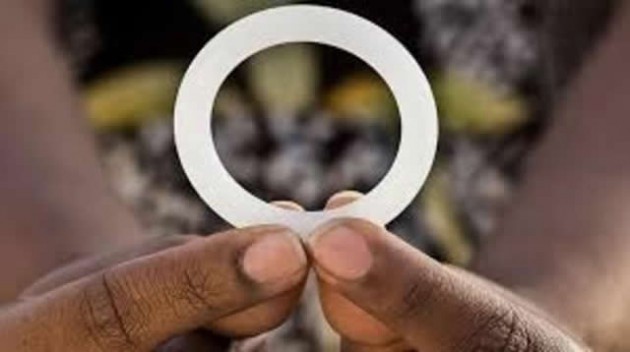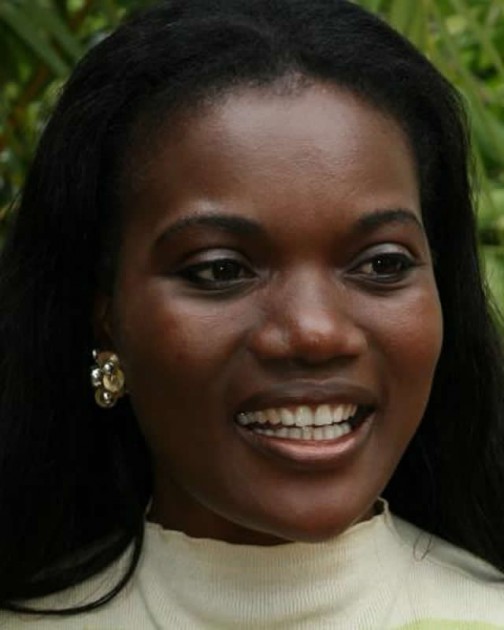Dapivirine ring: Hope for women


Two large clinical trials found that the vaginal ring prevented HIV infection about 30 percent. – sciencemag.org
Roselyne Sachiti : Features Editor
Mary Moyo, a woman from Zimbabwe’s capital Harare, was just 18 when she married her 27-year-old husband Mike Moyo in 2013. When she fell pregnant the following year, both Mary and Mike were tested for HIV when they visited their gynaecologist. Mary tested negative on three different times, while her husband was positive. “This strained our relationship. He could not take any of it. He was in denial despite being counselled before we took the test,” she said.Following the tests, their gynaecologist advised them to practise safe sex by consistently and correctly using condoms.
“This was not to be. Mike refused to use condoms. He said he paid lobola (bride price) to my parents and would not take any of that. He would assault me each time I refused to have unprotected sex. One day he beat me up before he became intimate with me. I was afraid,” she said.
Mary eventually left the marriage after endless beatings. She is currently single but hopes to meet someone “new”.
“I am lucky I did not contract HIV even after the forced intimacy several times,” she said.
She is one of millions of women excited by the results from two Phase III multi-country trials (ASPIRE and Ring) as she can now discreetly protect herself from both HIV and intimate partner violence should she come across such in future. Results of the four-week slow-release dapivirine vaginal ring were released at a Conference on Retroviruses and Opportunistic Infection in Boston Massachusetts, USA, a fortnight ago. The trials showed modest protection reducing rates of HIV acquisition by around one-third overall with greater effect in women over 21 years old who had higher adherence.
The findings said the vaginal ring containing an antiretroviral (ARV) drug called dapivirine that women use for a month at a time was safe and helped protect against HIV in a large-scale clinical trial involving more than 2 600 women in Africa, researchers who conducted the trial, known as ASPIRE, reported.
The study, which was led by the National Institutes of Health (NIH)-funded Microbicide Trials Network (MTN), found the dapivirine ring reduced the risk of HIV infection by 27 percent overall – there were 27 percent fewer women who acquired HIV in the group assigned to use the dapivirine ring than in the group assigned to use a placebo ring containing no active drug.
ASPIRE enrolled HIV-negative women aged 18 to 45 at 15 clinical research sites in Malawi, South Africa, Uganda and Zimbabwe.
In the second trial, called The Ring Study, HIV risk was reduced by 31 percent overall, and by 37 percent among participants older than 21.
The International Partnership for Microbicides (IPM), which developed the monthly dapivirine ring, is conducting The Ring Study in South Africa and Uganda among 1,959 women.
Although still ongoing, The Ring Study is reporting results early, following a recommendation of its independent data and safety monitoring board that the study proceed to final analysis.
Vaginal rings are flexible products that fit high up inside the vagina where they release a medication slowly over time. They are already used in the United States and Europe to deliver hormonal contraception. Women can insert and remove the ring themselves. The dapivirine ring adapts that medical technology by using an ARV instead of contraception as a way to offer women potentially longer-acting protection against HIV. With women accounting for nearly 60 percent of adults with HIV in sub-Saharan Africa, where unprotected heterosexual sex is the primary driver of the epidemic, the findings could not have come at a better time.
What makes these results interesting for a country like Zimbabwe is that many women like Mary silently suffer intimate partner violence and cannot negotiate safe sex despite interventions like condoms.
Adolescent females cannot also negotiate for safe sex as they usually date older men.
Is the vaginal ring the long awaited a game-changer in HIV prevention for women who are HIV negative and even those HIV positive, who would want to prevent reinfection?
Pan African Positive Women’s Coalition-Zimbabwe Country Coordinator, Ms Tendayi Kateketa-Westerhof, believes the vaginal ring is a game-changer because its safety and effectiveness have been established and it works.
“It has been proven to be safe and effective and can be used by women as there is evidence of modest protection and more women can use it in the future.
“The current HIV prevention strategies are not adequate for women to use. The vaginal ring is an added option that women can now use to protect themselves from HIV. Besides protecting women from HIV, it’s envisaged to reduce gender-based violence against women, in particular intimate partner violence as many women cannot negotiate for safe sex practices with their partners,” she said.
Kateketa–Westerhof said the results were also significant for women living with HIV as they can also use the vaginal ring to protect themselves from reinfection.
“HIV negative women can benefit more as they now have an additional option for protection against HIV. However, I wish to point out that the vaginal ring is not replacing existing HIV prevention strategies such as condoms which have proved to work as they reduce the risk of HIV by 60 percent if used correctly and consistently and I urge all sexually active women to continue using them.
“Both male and female condoms are relatively readily available in public health settings and women living with HIV and those who are negative are encouraged to continue using them. Condoms also offer protection against other sexually transmitted infections and unwanted pregnancies,” explained Kateketa-Westerhof.
She said since women had waited for close to three decades for an effective and efficient microbicide, the vaginal ring was a major breakthrough as it gave hope that with time more microbicides would be developed to suit different women and not a one-size-fits-all.
“Zimbabwe as a country we want to eradicate HIV or reduce infections to single digits. Therefore these results demand of us as a country to urgently invest more in ensuring the licensing of the product and coming up with tools for a pilot trial. Zimbabwean women and other African women were among those who participated in the trial and we applaud all the heroines who played a part in this whole process as their efforts will save many women around the world from HIV infection and reduce the burden of HIV and AIDS at country level,” she said.
She also pointed out that the vaginal ring requires consistent and correct use in the same way they are used to deliver contraception.
“I therefore do not foresee women rejecting it. In the meantime, there is need for educating women on the importance of the ring and its benefits to their wellbeing through comprehensive sexual and reproductive health and rights campaign. Community sensitization on the ring is important and as a country we need to prepare that ground-work now.”
Already, she said, women carried the burden of HIV.
“Statistics show that in Zimbabwe and Sub-Saharan Africa there are more women infected with HIV than men and more women are at risk of contracting HIV than men and the majority are young women between the ages of 15–24 years and this calls for us as a country to do business ‘unusual’.”
“We are desperate for a female controlled HIV prevention technology. We need community buy-in from stakeholders such as traditional, religious and cultural leaders on the importance of the ring.
“Most women become vulnerable to the risk of contracting HIV as a result of harmful religious, traditional and cultural practices. It is prudent to ensure that there is community buy-in for the product. There is need for male involvement in these processes to counter gender-based violence that might result,” she pointed out. Kateketa- Westerhof also called for comprehensive sexuality education for adolescents to reduce the barriers they face in accessing contraceptives and other strategies that protect them from HIV infection.
“There is urgent need to deliver tools and programmes that truly address young women and adolescent girls’ prevention needs now, while developing additional methods for the future.
“Adolescents must go back to the basics of abstinence, delayed sexual debut, and getting tested for HIV and knowing their status early, and remaining faithful to one faithful partner,” she added. SafAids spokesperson Tariro Chikumbirike-Makanga said the results were promising though not pleasing to adolescents.
“I personally am taking a cautious approach. The results were not pleasing on adolescents. Adherence is always a challenge. More needs to be done to ensure there is adherence,” she said.
She however, pointed out the need for correct and consistent use of condoms.
“Let the scientists do more so that we have higher percentages of success. We want to get to 100 percent success rate.
“We are working towards ending AIDS by 2030. The ring is coming in to complement other HIV prevention strategies, meaning that if used with other prevention methods, we can realise the dream of eliminating new HIV infections.
“On its own, the ring is not 100 percent. The success figures are still low. Women and young girls need to still continue to negotiate for condom use in their relationships. I am taking the ring as a complementary strategy, which should be used with already existing strategies,” she said. While congratulating Aspire, Centre for Aids Programme Research in South Africa (CAPRISA) Director, Professor Salim S Abdool Karim, said there was high hope that the monthly dapivirine ring would remedy the adherence problem seen in past trials of oral and topical pre-exposure prophylaxis (PrEP) and thereby achieve consistently high levels of protection against HIV.
“While the effectiveness of the dapivirine vaginal ring in preventing HIV is considerably lower than anticipated and hoped for, the success of the two trials in achieving high levels of adherence (82 percent in ASPIRE and 73 percent in The Ring Study) and regular monthly vaginal ring insertions, is encouraging,” Professor Abdool Karim explained, adding; “More research is needed to fully understand and overcome the remaining challenges for sustained adherence in this high-risk population as we look forward to the next set of approaches to HIV prevention in women that are currently being studied, including multi-purpose vaginal rings (for contraception and HIV prevention), injectable long-acting antiretrovirals, as well as injectable, broadly neutralising antibodies for protection through passive immunity.”
Associate Scientific Director of CAPRISA, Professor Quarraisha Abdool Karim commented: “The high HIV incidence rates reported in both trials highlight the urgent need for appropriate HIV prevention technologies for women in Africa. Indeed, the ongoing high number of new HIV infections particularly in young women in Africa is one of the major obstacles to current efforts to end the global AIDS epidemic.
“These two important studies highlight the challenges in developing technologies to prevent HIV in young women and provide further impetus for research to address them.”
The microbicides Trials Network protocol chair who led the ASPIRE study Jared Baeten (University of Washington) said: “This is a glass half-full moment.”
UNAIDS deputy executive director Luiz Loures was optimistic about what the results might mean for women worldwide.
“The HIV prevention field for women has struggled in the last few years – at times the glass had seemed almost completely empty. Now, for the first time, we have two trials demonstrating that a female-controlled HIV prevention method can safely help reduce new HIV infections.
“Women urgently need better options for HIV prevention, especially options that allow them greater control.
“The path to an effective microbicide has been a long one. The important results from these two studies take us one step closer to an HIV prevention product that could protect millions of women worldwide,” said Loures.
Chief medical officer of IPM and study director for The Ring Study Dr Annalene Nel commended women who took part in the trials.
“Women who volunteered for these studies live in communities with some of the highest rates of HIV in the world, and we saw that across women of all ages in both studies. Today, we have turned a corner in HIV prevention.
“We have seen the potential of an ARV ring, and must now work to fully realise this potential for women worldwide.”
Based on these results, IPM said they were now planning an Open-label extension (OLE) study. The OLE study would provide previous Ring Study participants with the dapivirine ring, and help answer critical questions about the product and its use while it is under regulatory review for licensing.
“We hope that knowledge of the ring’s safety and efficacy will encourage its use, as seen in oral PrEP OLEs. Pending approvals, this study could begin as soon as April 2016. Discussions are taking place about a similar OLE study for ASPIRE participants.”
Since they are the ring’s regulatory sponsor, IPM said they were also compiling data on the ring and plans to submit the comprehensive dossier of evidence regulators require for product licensure in Q1 2017.
IPM said they were also committed to working with governments, donors, communities and civil society to fully understand the findings from The Ring Study and ASPIRE, determine the appropriate role for the ring in HIV prevention programmes in Africa and prepare for affordable access, should the ring be approved.











Comments